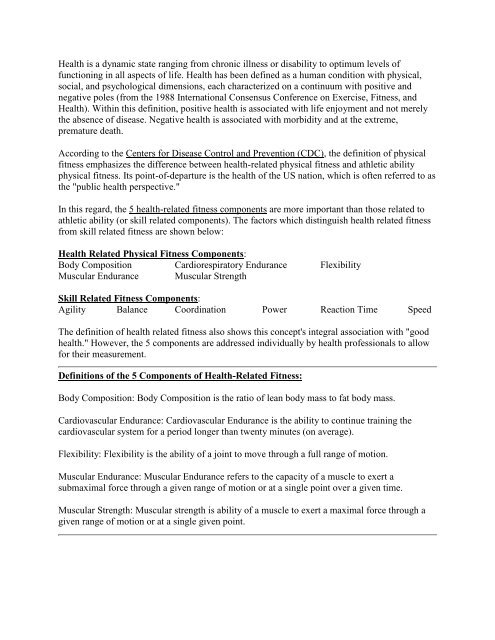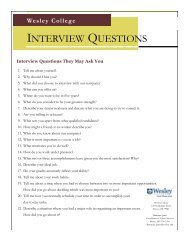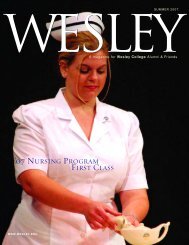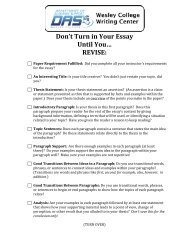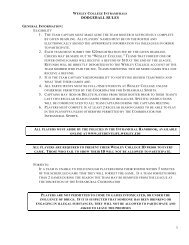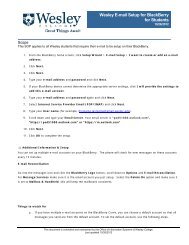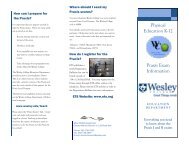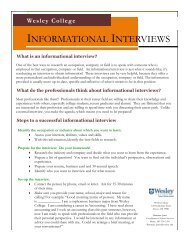Health-Related and Skill-Related Fitness
Health-Related and Skill-Related Fitness
Health-Related and Skill-Related Fitness
Create successful ePaper yourself
Turn your PDF publications into a flip-book with our unique Google optimized e-Paper software.
<strong>Health</strong> is a dynamic state ranging from chronic illness or disability to optimum levels of<br />
functioning in all aspects of life. <strong>Health</strong> has been defined as a human condition with physical,<br />
social, <strong>and</strong> psychological dimensions, each characterized on a continuum with positive <strong>and</strong><br />
negative poles (from the 1988 International Consensus Conference on Exercise, <strong>Fitness</strong>, <strong>and</strong><br />
<strong>Health</strong>). Within this definition, positive health is associated with life enjoyment <strong>and</strong> not merely<br />
the absence of disease. Negative health is associated with morbidity <strong>and</strong> at the extreme,<br />
premature death.<br />
According to the Centers for Disease Control <strong>and</strong> Prevention (CDC), the definition of physical<br />
fitness emphasizes the difference between health-related physical fitness <strong>and</strong> athletic ability<br />
physical fitness. Its point-of-departure is the health of the US nation, which is often referred to as<br />
the "public health perspective."<br />
In this regard, the 5 health-related fitness components are more important than those related to<br />
athletic ability (or skill related components). The factors which distinguish health related fitness<br />
from skill related fitness are shown below:<br />
<strong>Health</strong> <strong>Related</strong> Physical <strong>Fitness</strong> Components:<br />
Body Composition Cardiorespiratory Endurance Flexibility<br />
Muscular Endurance Muscular Strength<br />
<strong>Skill</strong> <strong>Related</strong> <strong>Fitness</strong> Components:<br />
Agility Balance Coordination Power Reaction Time Speed<br />
The definition of health related fitness also shows this concept's integral association with "good<br />
health." However, the 5 components are addressed individually by health professionals to allow<br />
for their measurement.<br />
Definitions of the 5 Components of <strong>Health</strong>-<strong>Related</strong> <strong>Fitness</strong>:<br />
Body Composition: Body Composition is the ratio of lean body mass to fat body mass.<br />
Cardiovascular Endurance: Cardiovascular Endurance is the ability to continue training the<br />
cardiovascular system for a period longer than twenty minutes (on average).<br />
Flexibility: Flexibility is the ability of a joint to move through a full range of motion.<br />
Muscular Endurance: Muscular Endurance refers to the capacity of a muscle to exert a<br />
submaximal force through a given range of motion or at a single point over a given time.<br />
Muscular Strength: Muscular strength is ability of a muscle to exert a maximal force through a<br />
given range of motion or at a single given point.
<strong>Skill</strong>-<strong>Related</strong> <strong>Fitness</strong><br />
<strong>Skill</strong>-related fitness includes fitness elements such as agility, balance, speed, <strong>and</strong> coordination.<br />
While these elements are important for participation in various performance-related activities,<br />
they may have little significance for the day-to-day tasks of most people or their general health.<br />
Definitions of the 6 Components of <strong>Skill</strong>-<strong>Related</strong> <strong>Fitness</strong>:<br />
Agility is a skill-related component of physical fitness that relates to the ability to rapidly change<br />
the position of the entire body in space with speed <strong>and</strong> accuracy.<br />
Balance refers to a person’s ability to maintain their equilibrium when moving (dynamic<br />
balance) or when they are in a stationary position (static balance).<br />
Examples:<br />
• performing a v-sit on the beam or on the floor<br />
• l<strong>and</strong>ing after a rebound in basketball<br />
• re-gaining balance after ‘stepping in opposition’ when serving a ball<br />
Coordination is a skill-related component of physical fitness that relates to the ability to use the<br />
senses, such as sight <strong>and</strong> hearing, together with body parts in performing motor tasks smoothly<br />
<strong>and</strong> accurately.<br />
Power is a skill-related component of physical fitness that relates to the rate at which one can<br />
perform work. Power is the amount of work performed per unit of time. Amount of Work/time<br />
Reaction time is a skill-related physical fitness component that relates to the time elapsed<br />
between stimulation <strong>and</strong> the beginning of reaction to it.<br />
Speed relates to the ability to perform a movement within a short time period.<br />
References:<br />
http://www.sensible-health-related-fitness.com/definition-of-health-related-fitness.html<br />
http://www.teachpe.com/fitness/health.php<br />
http://www.plu.edu/~chasega/terms.html<br />
http://w3.lphs.org/academics/dept/pe/documents/skill-related_fitness_components.pdf


